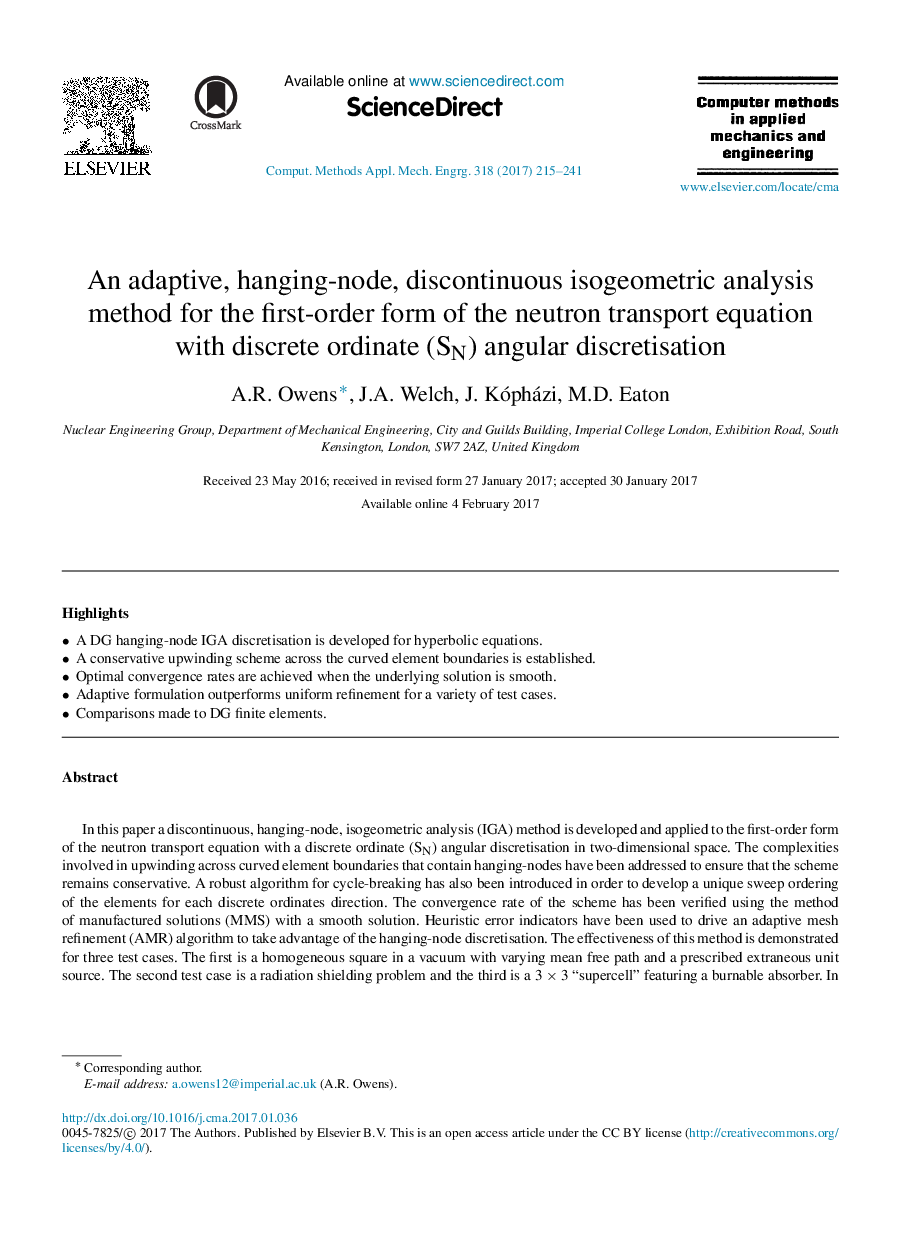| Article ID | Journal | Published Year | Pages | File Type |
|---|---|---|---|---|
| 4963957 | Computer Methods in Applied Mechanics and Engineering | 2017 | 27 Pages |
â¢A DG hanging-node IGA discretisation is developed for hyperbolic equations.â¢A conservative upwinding scheme across the curved element boundaries is established.â¢Optimal convergence rates are achieved when the underlying solution is smooth.â¢Adaptive formulation outperforms uniform refinement for a variety of test cases.â¢Comparisons made to DG finite elements.
In this paper a discontinuous, hanging-node, isogeometric analysis (IGA) method is developed and applied to the first-order form of the neutron transport equation with a discrete ordinate (SN) angular discretisation in two-dimensional space. The complexities involved in upwinding across curved element boundaries that contain hanging-nodes have been addressed to ensure that the scheme remains conservative. A robust algorithm for cycle-breaking has also been introduced in order to develop a unique sweep ordering of the elements for each discrete ordinates direction. The convergence rate of the scheme has been verified using the method of manufactured solutions (MMS) with a smooth solution. Heuristic error indicators have been used to drive an adaptive mesh refinement (AMR) algorithm to take advantage of the hanging-node discretisation. The effectiveness of this method is demonstrated for three test cases. The first is a homogeneous square in a vacuum with varying mean free path and a prescribed extraneous unit source. The second test case is a radiation shielding problem and the third is a 3Ã3 “supercell” featuring a burnable absorber. In the final test case, comparisons are made to the discontinuous Galerkin finite element method (DGFEM) using both straight-sided and curved quadratic finite elements.
